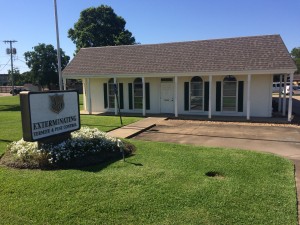Researchers have documented and described around 3,000 distinct termite species. All termite species can be divided into three categories based on colony size, foraging habits, habitat preference and several other factors. These three termite groups are known as: subterranean, drywood and dampwood termites. While subterranean termites are the primary culprits behind large-scale infestations in timber-framed houses and buildings, drywood termites commonly infest isolated wood-constructed objects, such as decorative items, baseball bats, wooden boats and furniture items. Drywood termites can also infest structural woods, such as attic wood and hardwood floors, but these termites are most notable for infesting pieces of furniture. Not long ago, a group of Filipino researchers carried out the first ever study concerning which types of furniture items are at the greatest risk of becoming infested with drywood termites. As it turns out, a piece of furnitures’ particular design, as well as the types of external varnish and paints used for coating furniture, can influence a piece of furniture’s’ susceptibility to drywood termite infestations.
In America alone, it is estimated that drywood termites account for 5 to 20 percent of the 1.5 to 5 billion dollars spent each year on termite control efforts and termite-damage repairs. In order to better control drywood termites, it is necessary to identify which types of furniture drywood termites infest most often. While swarming, drywood termite alates tend to infest furniture items that feature numerous cracks and overlapping and adjoining pieces of wood. Numerous cracks allow small termite alates to easily access internal wood-compartments. Also, relatively complicated furniture designs that are composed of many overlapping pieces of wood provide alates with numerous access points as well. Drywood termite infestations are far more common within unpainted furniture items as opposed to painted ones. Painted wood will provide some degree of protection against drywood termite infestations, but infestations become more frequent in painted furniture as the paint degrades over time. Based on the study, drywood termites rely on cracks and overlapping pieces of wood as access points for establishing new colonies within furniture items. The more structurally complex a piece of furniture is, the more likely it will become infested with drywood termites. For example, researchers noticed that drywood termites had not infested stools, as a stool’s simple design does not allow drywood termites many access points, but infestations were common in more structurally complicated furniture items, such as armchairs, cabinets and tables. The materials that a piece of furniture is made of has no effect on infestation rates, as the number of drywood termite infestations were nearly equal between furniture items made of pure lumber, plywood and vinyl-coated wood.
Have you ever purchased a wood-constructed furniture item that had been infested with drywood termites?
Tags: Termite Control, Termite Inspection, Termites




